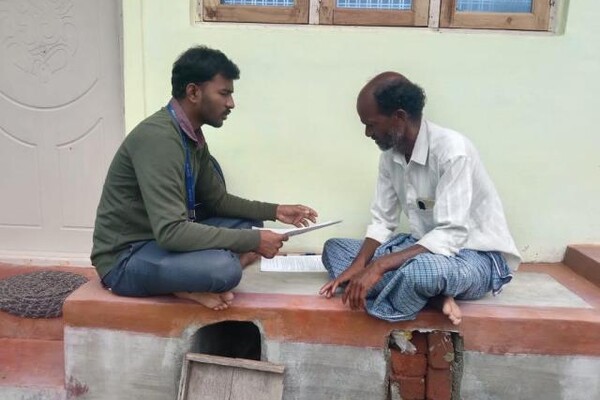Mobile Menu
- Education
- Research
-
Students
- High School Outreach
- Undergraduate & Beyond: Community of Support
- Current Students
- Faculty & Staff
- Alumni
- News & Events
- Giving
- About

A new study suggests that people at risk for rare genetic forms of frontotemporal dementia should consider being tested for a common variant in a gene called TMEM106B, which is known to be protective against disease onset.
The condition is a leading cause of dementia and typically develops in midlife. It can be caused by rare genetic mutations or occur sporadically in their absence.
“We know that rare mutations in mainly three genes can cause genetic frontotemporal dementia, but in combination with this common protective TMEM106B variant, the disease may never start, it may come on later, or be more mild,” says Mario Masellis, principal investigator of the Canadian arm of the international Genetic Frontotemporal Dementia Initiative, neurologist at Sunnybrook Health Sciences Centre and a neurology professor at the University of Toronto’s Temerty Faculty of Medicine.
“It is important to take into consideration this protective variant when an individual is involved in a clinical trial or when someone is considering finding out their genetic mutation status for frontotemporal dementia. This is particularly important if they come from a family with a known genetic cause, since the presence of two copies of this protective variant will alter risk and can modify outcomes of research investigations.”
Published in the journal Brain, the researchers recommend accounting for the protective variant in clinical trials that target the neurocognitive disorder because it can affect measures such as brain shrinkage or atrophy, neurodegeneration biomarkers in blood tests and other measurements, and cognitive skills assessed in these studies.
The protective variant was discovered in previous large-scale genome-wide studies that showed it was protective against a specific subtype of the disease associated with a unique abnormal protein signature in the brain called TDP. The protective effect was even stronger in individuals with mutations in a gene called GRN. However, researchers never fully understood how the variant protected against disease. In the most recent study, investigators examined the genetic variant in 518 people with or at risk of developing genetic frontotemporal dementia.
“Our study shows that individuals with two copies of this protective variant--one from each parent--and also to a lesser degree in those with one copy, had less brain shrinkage, less neurodegeneration and less decline in cognition, especially if they carried a GRN mutation,” adds Masellis, who is also a scientist in the Hurvitz Brain Sciences Research Program at Sunnybrook Research Institute.
The study was co-led by Saira Mirza, research associate at the Centre for Brain Resilience and Recovery at Sunnybrook Research Institute, and Maurice Pasternak, a PhD candidate in Temerty Medicine’s Institute of Medical Sciences.
“Knowledge of the natural progression of both genetic and sporadic frontotemporal dementia and the identification of factors that modify its course are crucial for the effective development of novel therapeutics, ideally during the stages between the appearance of initial symptoms and their full development or even earlier, before irrecoverable brain damage has occurred. This common protective variant should be accounted for as it can and will skew research results, leading to either false-positive or false-negative findings in clinical trials. This work is guiding us to precision medicine in action as therapeutic strategies may arise from exploiting protective genetic mechanisms.”
Approximately one-third of people with the condition inherit it from their parents.
The genetically inherited forms are rare and cause an earlier onset of dementia and profound changes in behaviour and language abilities that significantly impact individuals and their families in the prime of their lives.
There are currently no approved disease-modifying therapies for genetic frontotemporal dementia. Several drug candidates are being evaluated in clinical trials.
The research was supported by the Canadian Institutes of Health Research and the Weston Brain Institute.

